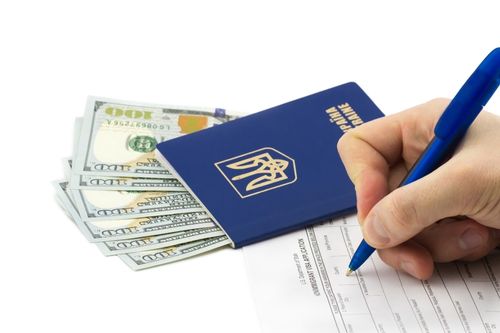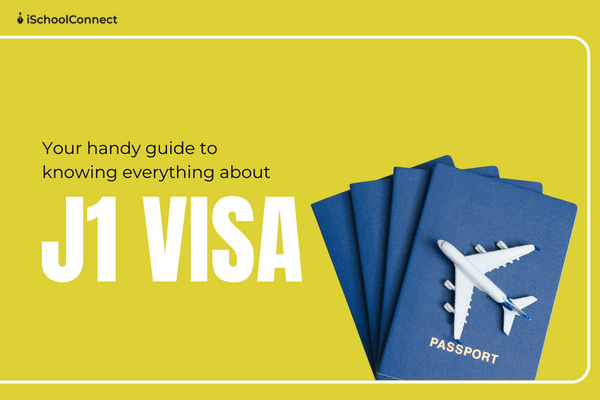Table of Contents
Non-immigrants are eligible for a J1 visa
You may have come across various types of student visas as an international student planning to study in the United States. F-1 and J-1 student visas are the most common types of student visas. F-1 and J-1 visas are required for various programs and have varying conditions, requirements, and benefits. This is why it is essential to thoroughly understand each type of US student visa before applying to study in the US.
Key factors of J1 visa
The distinction between F1 and J1 visas is based on factors such as sponsors, dependents, employment, and so on. While the former is only open to students, the latter accepts applications from various categories, including trainees, students, scholars, teachers, interns, research, summer work, professors, and others. It is also referred to as an exchange visitor visa. Foreigners can gain valuable training and skills in various fields in the United States and then apply them in their home countries. The visa also includes a ‘home residency’ requirement. Individuals should spend at least a few years in their home country before returning to the United States.
Requirements for J1 Visas

Each program’s J1 visa duration and guidelines will be different. Take a closer look
- Au Pair Program- Those aged 18 to 26 are eligible to visit for up to two years, live with a host family, study at any institution, and provide childcare to the host.
- Short-term Scholar Program- Every year, scholars and professors can conduct research and teach at US institutions for up to six months.
- Work & Travel Program- Full-time students at any post-secondary institution may visit for travel and work in the spring, summer, and winter.
- Internship- Recent graduates may visit to learn more about the country’s culture and gain experience in their chosen field of work.
- High School or Secondary School- Students may enroll in any accredited private or public school and live with an American family or at a boarding school.
- Camp Counselor- Those 18 and older may work as a teacher or camp counselor with American children at summer camps.
J1 visa fees and charges

The J1 visa costs around $160. (around Rs 12,000). Additional SEVIS fees may cause the visa amount to change. SEVIS fees vary by visa category and can cost several hundred dollars.
The application process for J1 visas
- Find your designated sponsor with US Department of State approval.
- Obtain admission to their educational program.
- Submit the additional DS-2019 forms for any dependents traveling with you.
- Fill out the form to schedule an interview with the US Consulate.
You must pay the SEVIS I-901 fee to the Department of Homeland Security via your application. In addition, you must provide a valid passport with at least 6 months of validity and a colored personal photograph.
You must appear for the interview at the US Consulate or Embassy. In most cases, children under 13 will not require an interview. The same is true for those over the age of 80.
Necessary documents for J1 visa
- Form DS-7002 or training plan
- DS-2019 Certificate of eligibility
- Proof of US Consulate fee payment
- Confirmation page for an online application form or DS-160
- Passport-sized photograph
- Payment proof of the SEVIS fee
- Passport
Difference between a J-1 and an F-1 Student Visa
While J-1 and F-1 student visas appear to be similar, there are significant differences to be aware of when deciding which visa to apply for-
Point of Contact
J-1 students must coordinate with a responsible officer from their program sponsor. Responsible officers monitor the health, safety, and welfare of J-1 visa students and ensure that the candidate meets all the visa requirements. F-1 students can access a Designated School Official (DSO) at their college or university. DSOs assist students with all visa requirements and regulations throughout their time in the United States.
Certificates of Eligibility
Students must submit Form DS-2019 when applying for a J-1 student visa. This form outlines program details and other important information, such as a cost breakdown, program start, and end dates, and financial support options. F-1 students must submit an I-20 form that contains the same information.
Post-graduation work and training
J-1 students are eligible for Academic Training (AT) in a field related to their program for up to 18 months. J-1 students with a Ph.D. can apply for an additional 18 months of AT in their related field. Students with an F-1 visa may apply for Optional Practical Training (OPT) in the United States for up to 12 months after graduation. F-1 students pursuing STEM degrees may request two additional years of work in their field.
Working restrictions
Unlike J-1 visa students, who are only permitted to work on campus, F-1 students get permission to work off campus after completing one academic year of study. J-1 visa students’ dependents (spouses and children) get permission to work and study in the United States full-time. Dependents of F-1 students do not get permission to work but may enroll in part-time studies.
Key takeaways
- J1 Visa is for non-immigrants, people visiting the USA for a short period for work, training, or student/scholar programs. Several categories of J1 visas allow you to work and study simultaneously.
- The fee for a J1 visa is around $160. (around Rs 12,000). You might have to pay additional SEVIS fees, which might result in a variation in the total fee for the visa. SEVIS fees vary by visa category and can cost over several hundred dollars.
- Form DS-7002 or training plan, DS-2019 Certificate of eligibility, proof of US Consulate fee payment, confirmation page for an online application form or DS-160, and passport are some of the documents required for J1 visa application.
Did you find this blog informative? If so, please share your thoughts in the comments section below. Click here to contact us for more information on the J1 visa. We would be happy to assist you with your queries.
Liked this blog? Read next: Australia band requirements for visa
FAQs
Q1. How long is a J-1 visa valid?
Ans- This J-1 Exchange Visitor category allows for a three-week minimum stay and a five-year maximum continuous stay. The maximum stay for a J-1 research scholar/professor is five years.
Q2. Can I stay in the U.S. after the J-1 visa expires?
Ans- At the end of the program, J-1 scholars get a 30-day grace period. This means you have until 30 days after the end of your program to leave the United States.
Q3. Can a J-1 visa holder apply for a green card?
Ans- Those who hold J-1 visas in the United States may apply for a Green Card through employment-based or family-based immigration.







